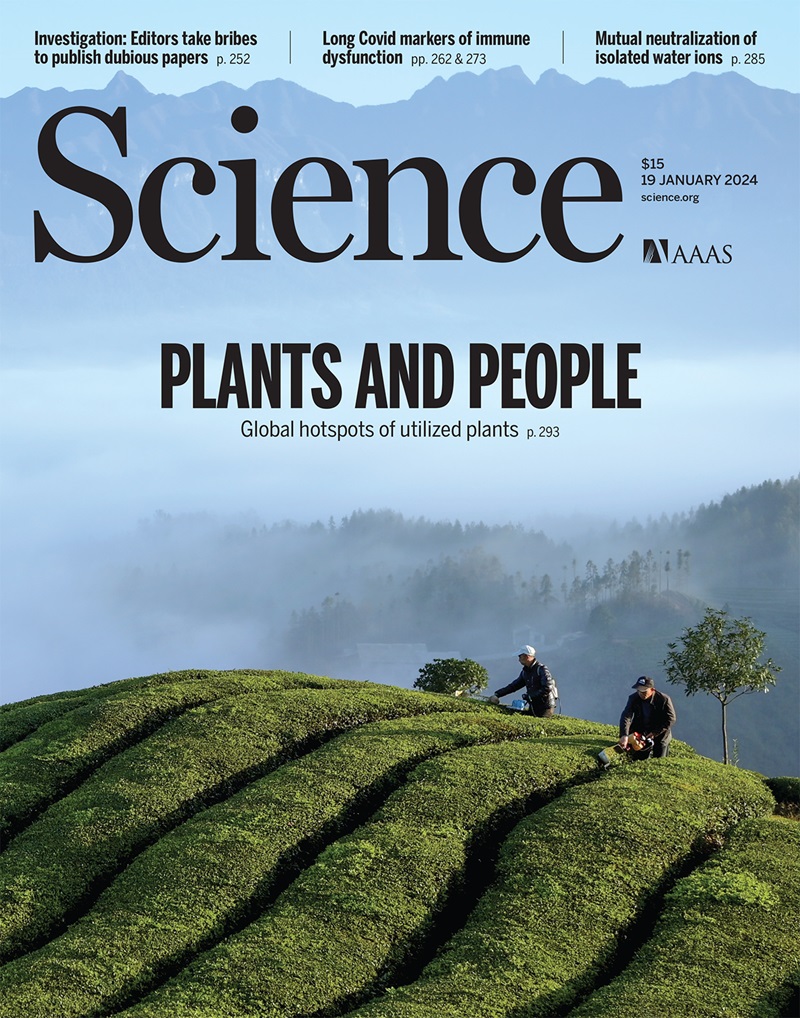Observing the evolution of the Sun’s global coronal magnetic field over 8 months
IF 44.7
1区 综合性期刊
Q1 MULTIDISCIPLINARY SCIENCES
引用次数: 0
Abstract
The magnetic field in the Sun’s corona stores energy that can be released to heat plasma and drive solar eruptions. Measurements of the global coronal magnetic field have been limited to several snapshots. In this work, we present observations, using the Upgraded Coronal Multi-channel Polarimeter, that provide 114 magnetograms of the global corona above the solar limb spanning ~8 months. We determined the magnetic field distribution with altitude in the corona and monitored the evolution at different latitudes over multiple solar rotations. The field strength between 1.05 and 1.60 solar radii varies from <1 to ~20 gauss. A signature of active longitudes appears in the coronal magnetic field measurements. Coronal models are generally consistent with our observations, though they have larger discrepancies in high-latitude regions.
观测 8 个月来太阳全球日冕磁场的演变。
日冕磁场储存的能量可以释放出来加热等离子体,推动太阳爆发。对全球日冕磁场的测量仅限于几个快照。在这项工作中,我们利用升级版日冕多通道极化计进行了观测,提供了日缘上方全球日冕的 114 幅磁图,时间跨度约为 8 个月。我们确定了日冕中磁场随高度的分布情况,并监测了多次太阳公转过程中不同纬度的演变情况。在 1.05 至 1.60 太阳半径之间的磁场强度变化从
本文章由计算机程序翻译,如有差异,请以英文原文为准。
求助全文
约1分钟内获得全文
求助全文
来源期刊

Science
综合性期刊-综合性期刊
CiteScore
61.10
自引率
0.90%
发文量
0
审稿时长
2.1 months
期刊介绍:
Science is a leading outlet for scientific news, commentary, and cutting-edge research. Through its print and online incarnations, Science reaches an estimated worldwide readership of more than one million. Science’s authorship is global too, and its articles consistently rank among the world's most cited research.
Science serves as a forum for discussion of important issues related to the advancement of science by publishing material on which a consensus has been reached as well as including the presentation of minority or conflicting points of view. Accordingly, all articles published in Science—including editorials, news and comment, and book reviews—are signed and reflect the individual views of the authors and not official points of view adopted by AAAS or the institutions with which the authors are affiliated.
Science seeks to publish those papers that are most influential in their fields or across fields and that will significantly advance scientific understanding. Selected papers should present novel and broadly important data, syntheses, or concepts. They should merit recognition by the wider scientific community and general public provided by publication in Science, beyond that provided by specialty journals. Science welcomes submissions from all fields of science and from any source. The editors are committed to the prompt evaluation and publication of submitted papers while upholding high standards that support reproducibility of published research. Science is published weekly; selected papers are published online ahead of print.
 求助内容:
求助内容: 应助结果提醒方式:
应助结果提醒方式:


